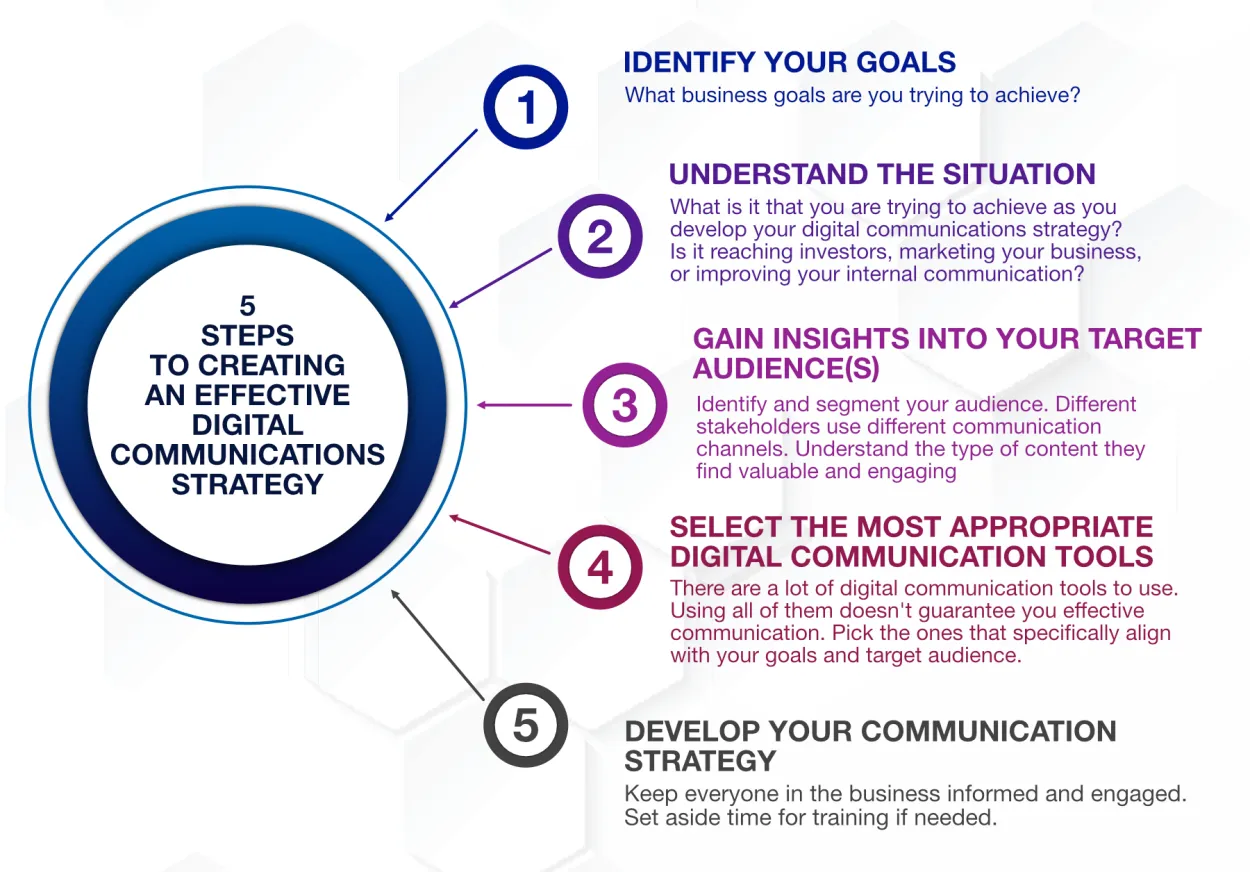Business Communication in the Digital Age has become increasingly important in today’s fast-paced and interconnected world. With the rise of technology and the internet, businesses are now using various digital platforms to communicate, collaborate, and build relationships. In this article, we will explore the significance of effective business communication in the digital era and how it impacts the success of organizations.
Utilizing Email and Chat Effectively
Email and chat platforms have become indispensable means of communication in the modern business landscape. In order to effectively use these digital tools, it is essential to understand their best practices and maximize their potential.
When it comes to email communication, clarity and conciseness are paramount. Use a concise subject line that accurately summarizes the content of the email. Start your message with a polite greeting and clearly state the purpose of your email in the opening paragraph. Use bullet points or numbered lists to organize complex information.
Furthermore, be mindful of email etiquette. Respond promptly to important emails and avoid using excessive capitalization, abbreviations, or emoticons that may be misinterpreted. Always proofread your emails for grammar and spelling errors before hitting the send button.
Similarly, chat platforms offer real-time communication and collaboration opportunities. To make the most out of chat conversations, be clear and concise in your messages. Use appropriate formatting and punctuation to maintain readability. When participating in group chats, avoid sending irrelevant messages that could clutter the conversation.
Additionally, it is crucial to be aware of chat etiquette. Always be respectful and professional in your language and tone. Ensure that you are using the appropriate chat channels for specific discussions and avoid sharing sensitive information in public chat groups.
By utilizing email and chat effectively, businesses can enhance productivity, streamline communication, and foster strong relationships with clients and colleagues. As digital communication continues to evolve, adapting to these tools is essential for success in the business world.
Virtual meetings have become a staple in business communication as technology continues to advance in the digital age. In today’s fast-paced world, professionals need to adapt and effectively navigate these virtual interactions to ensure productivity and seamless collaboration.
Here are some essential tips for navigating virtual meetings:
1. Prepare in advance
Prioritize preparation by reviewing meeting agendas, gathering necessary documents, and familiarizing yourself with the meeting platform. This will contribute to a smooth and well-organized virtual meeting experience.
2. Create a professional environment
Find a quiet space, free from distractions, and ensure professional attire. This fosters a focused environment and helps maintain a sense of professionalism among participants.
3. Test technology beforehand
Ensure that your internet connection, audio, and video functionalities are working properly before the meeting starts. This will minimize disruptions and technical difficulties during the session.
4. Engage actively
Active participation is crucial in virtual meetings. Engage by actively listening, asking questions, and contributing ideas. This demonstrates your commitment and helps build meaningful connections with colleagues.
5. Use visual aids
Utilize visual aids such as slides or screen sharing to enhance understanding and engagement. Visuals can help convey complex information more effectively and support the overall flow of the meeting.
6. Practice good meeting etiquette
Respect meeting protocols, including speaking one at a time, raising your hand to signal a desire to speak, and muting yourself when not talking to minimize background noise.
7. Follow up and recap
After the meeting concludes, send a recap email to all participants, highlighting the main points discussed, action items, and next steps. This ensures clarity and accountability among team members.
By following these tips, professionals can navigate virtual meetings successfully, ensuring effective communication and collaboration in the digital age.
Building Authentic Connections Online
In today’s digitally-driven world, businesses are more reliant on online communication than ever before. However, it can be a challenge to maintain authentic connections in the digital age. With the rise of social media and other online platforms, businesses often find themselves struggling to create meaningful relationships with their audience.
One key aspect of building authentic connections online is being transparent and genuine. When communicating with your audience, it’s important to be honest and open about your intentions. Avoid using manipulative tactics or trying to deceive your audience, as this can damage trust and credibility.
Another vital factor in creating authentic connections is actively listening to your audience. Engage in conversations, ask for feedback, and respond to comments and messages. Showing that you value the opinions and experiences of your audience can go a long way in building rapport and trust.
Additionally, personalization plays a significant role in establishing authenticity. Tailor your communication to each individual or segment of your audience. Address them by name, provide relevant content, and show that you understand their needs and preferences.
Utilizing storytelling techniques is another effective way to build authentic connections. Share your brand’s story and values, and connect emotionally with your audience. People are more likely to engage and feel connected when they can relate to a brand on a personal level.
Lastly, consistency is key. Be consistent in your tone of voice, messaging, and overall brand image. This helps to build familiarity and trust among your audience.
In conclusion, building authentic connections online is crucial in today’s business landscape. By being transparent, listening actively, personalizing communication, utilizing storytelling, and maintaining consistency, businesses can forge genuine relationships with their audience, leading to long-term success.
Conclusion
Business communication in the digital age has become more vital than ever. With the advancements in technology, businesses must adapt and utilize various digital communication tools effectively to stay competitive. Clear and concise communication, along with the ability to adapt to changing communication platforms, is key for success in today’s fast-paced business world.




